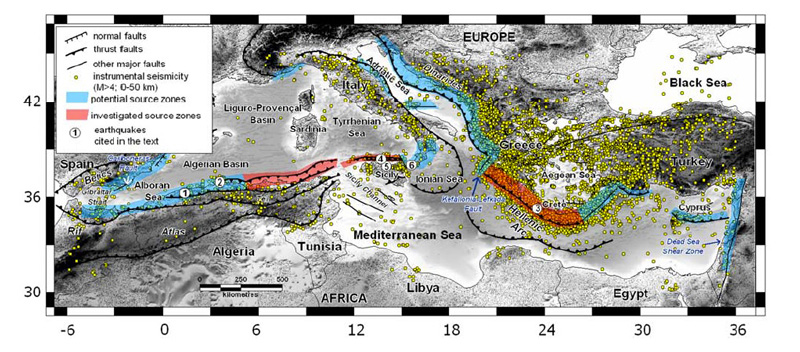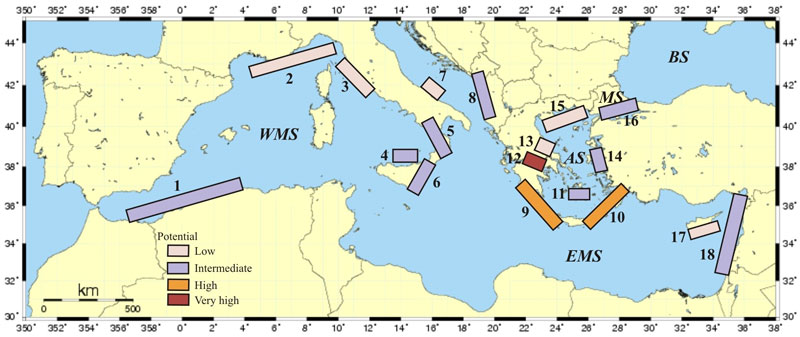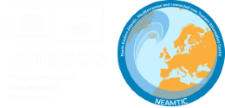Am I in danger
Tsunami risk in the Mediterranean and North-East Atlantic
Although less frequent than in the Pacific and Indian Ocean tsunamis can hit the Mediterranean and North East Atlantic coastal areas causing extensive loss of lives and properties.
Many centuries ago the legends and the chronicles left us a reminder of what has already happened. In the VI century Procopio da Cesarea described the effects of the quirks of Porfirione, the sea monster that every 50 years generated waves capable of killing professional sailors and destroying coastal settlements in the Bosphorus area (Guerra gotica, VII, 29)
Also the myth of Altantide is frequently correlated to the destruction of the Minoan civilization as consequence of the eruption of the Santorini volcano around the 1620 BC that was combined with a strong earthquake causing tremendous tsunami that destroyed many ancient settlements in Northern Crete
During the Persian siege of the sea town Potidaea, Greece, in 479 BC the Greek historian Herodotus reports how the Persian attackers who tried to exploit an unusual retreat of the water were suddenly surprised by "a great flood-tide, higher, as the people of the place say, than any one of the many that had been before". Herodotus attributes the cause of the sudden flood to the wrath of Poseidon.
In the morning of July 21, 365 AD, an earthquake of great magnitude caused a huge tsunami more than 100 feet high. It devastated Alexandria and the eastern shores of the Mediterranean, killing thousands and hurling ships nearly two miles inland. The Roman historian Ammianus Marcellinus (Res Gestae 26.10.15-19) describes in his vivid account the typical sequence of the tsunami including an incipient earthquake, the sudden retreat of the sea and a following gigantic wave.
Slightly after daybreak, and heralded by a thick succession of fiercely shaken thunderbolts, the solidity of the whole earth was made to shake and shudder, and the sea was driven away, its waves were rolled back, and it disappeared, so that the abyss of the depths was uncovered and many-shaped varieties of sea-creatures were seen stuck in the slime; the great wastes of those valleys and mountains, which the very creation had dismissed beneath the vast whirlpools, at that moment, as it was given to be believed, looked up at the sun's rays.

The presence of active volcanoes as in the Sicily channels, in the Thyrrenian and in the Aegean sea can also be at the origin of major landslides, and of tsunamis. The recent eruption of Stromboli has caused the collapse of part of the flank of the volcano whose effect was the generation of a tsunami that hit the Northern coast of Sicily and of the Western once of Calabria.

The tsunami risk in the Mediterranean area is augmented by the extremely short distance between the tsunami-genic areas and the exposed coast. From the occurrence of a tsunamic-genic event to the impact of the waves on the coast the time could be less than one hour.
A tsunami early warning system if well developed from a technical point of view but also taking in mind the population living on the coast can help in saving human lives. The damage to properties and economic activities can only be reduced by promoting the concept of prevention, and of correct spatial planning in order to be able to mitigate the risk.
If you want to know more
http://www.gein.noa.gr/services/tsunami.htm









































